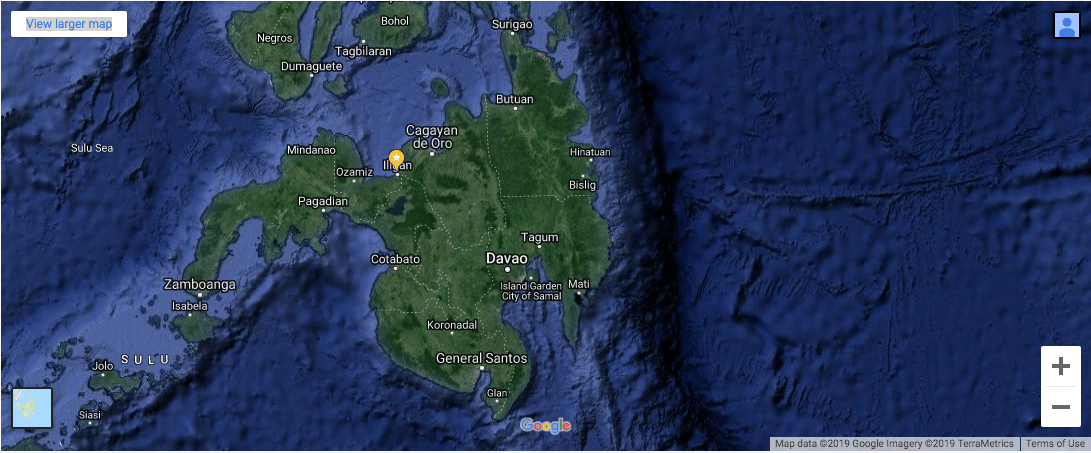Biosea Health FAQ
Here are some common questions about Pacific Sea Moss. More specific and detailed information are in the various news articles on the site. The detailed Pacific Sea Moss label is here(Click Here)
Our Seaweed is Safe
A question often asked. How do I know this product is safe? I.e. can we be sure that the processes are ok and that there will be no foreign baddies in it? This seaweed is grown in the tropics / Philippines / somewhere foreign. I don’t trust the food source.
Seaweed is food. We are legally and morally required to ensure that food is good to eat. In Australia about 4 million people a year get food poisoning, and in the USA the Center for Disease Control (CDC) estimates that each year 48 million people get sick from a food-borne illness, 128,000 are hospitalized, and 3,000 die. Researchers have identified more than 250 food-borne diseases. Most of them are infections, caused by a variety of bacteria, viruses, and parasites.
The last thing we want is to sell a food product that can make you ill. We therefore have taken all steps available from planting to selling to remove risks. Every batch number can be tracked back to a GPS coordinate in the farming area.
- The seaweed is organically grown in the cleanest water we can grow seaweed. The Pacific Ocean stretches 13,000 km to the nearest landfall on the USA West Coast
- Seaweed is organic certified by the OCCP (Philippine organic certifying authority)
- We are completing full HACCP Accreditation by an international authority (JAS / ANZ)
- We are implementing ISO22000:2018 quality systems with policies and procedures more strict than most food producers.
- We use a full paddock to plate system (AgKonect) to enable full traceability.
Water Quality and Product Tests are undertaken on every batch
- Heavy metals – Lead, Cadmium, Mercury
- Coliform
- Listeria
- Salmonella
- Moisture
- Iodine levels
- Staphylococcus
Testing of nutrient levels is done at regular intervals and research is underway to understand variation during different seasons.
Carrageenan is Safe
Although there are thousands of global carrageenophyte species, less than 20 are used commercially to produce carrageenan (GGN) – a gelling, thickening and stabilizer used in many dairy, meat and other products including beer, toothpaste, shampoo, air freshener gels, soy milk, diet sodas, pet foods, personal lubricants and food.
Carrageenan is Safe
The most important products in terms of volume of carrageenan used are flavored milk (particularly chocolate), frozen desserts, ready-to-eat desserts, soy milk, and cottage cheese dressings It may be seen on labels as E407.
Carrageenan from Irish Moss has been used since the 15th Century and is an alternative for vegetarians or vegans to gelatin.
For more information, check out the details on Wikipedia.
The primary commercial warm water–cultivated species list includes Kappaphycus alverezii (previously Eucheuma cottonii or ‘cottonii’) and Eucheuma denticulatum ( Previously E. spinosum or called ‘Spinosum’). ‘Cottonii’ produces 90% kappa-CGN and spinosum is 85% iota-CGN. These are spiny, bushy seaweeds that grow to about 50 cm high in reef or lagoon regions primarily in the Philippines, Indonesia, and East Africa. These species are farmed in tropical waters with an 8- to 12-week harvest cycle and available year round. Only one CGN type is extracted from each of these two species.
In contrast, cold-water species are harvested annually during the summer months. The primary commercial species includes Chondrus crispus/Gigartina stellata (‘Irish Moss’), which comprise small bushy seaweeds about 10 cm high and widely distributed around the coasts of the North Atlantic ocean, and the much larger Gigartina species harvested off the West Coast of South America (primarily Chile). These wild-harvested seaweeds comprise both haploid and diploid plants which grow together and appear identical. Haploid plants produce kappa-CGN; diploid plants produce lambda-CGN. Consequently, CGN extracted from cold-water species is a mix of kappa-CGN and lambda-CGN in variable ratio depending on the season and location.
All commercial seaweed species are immediately and thoroughly dried to target moisture in the range 18–35% depending on the species and natural salt content from the seawater. The dried seaweeds are baled and shipped to the CGN manufacturing plants which are found in various countries including Indonesia, China, France.
Kappa–Carrageenan = Firm Gel
Kappa-carrageenan yields a strong gel often described as firm and brittle in the presence of potassium ions, and may have syneresis. The kappa structure is a linear polysaccharide with one sulfate group per two galactose molecules and assumes a helical network that is only strengthened with potassium present. Kappa needs to be solubilized in hot water, but the sodium salts of kappa-carrageenan can be soluble in cold water. The resulting gels are not freeze-thaw stable.
 Kappa-carrageenan is used in dairy applications with success because it complexes with kappa-casein to form a pourable gel formation. This link allows particles like cocoa (EU) in chocolate milk or whey proteins in other dairy products to remain suspended. In ice cream, the kappa form is used to stabilize air bubbles. In processed cheese , it can be used to reduce the amount of natural cheese without changing manufacturability or finished product texture.
Kappa-carrageenan is used in dairy applications with success because it complexes with kappa-casein to form a pourable gel formation. This link allows particles like cocoa (EU) in chocolate milk or whey proteins in other dairy products to remain suspended. In ice cream, the kappa form is used to stabilize air bubbles. In processed cheese , it can be used to reduce the amount of natural cheese without changing manufacturability or finished product texture.
Kappa-carrageenan is also commonly used in meat processing. It enables higher moisture content in meat products like sausages and cooked hams, which results in better yields and improved slicing. In low-fat meat products, using it will result in eating qualities which mimic full fat meat products
Iota–Carrageenan = Elastic Gel
Like kappa, the Iota-carrageenan structure is also a linear polysaccharide which assumes a helical conformation but with two sulfate groups per two galactose molecules. Iota forms a soft elastic gel especially in the presence of calcium ions and the resulting gel strength is ionic strength dependent. Unlike kappa, iota-carrageenan forms gels with freeze-thaw stability and is less likely to undergo syneresis. The iota form is soluble in hot water, and only the sodium salts of iota-carrageenan are soluble in cold water.
Iota-carrageenan gels have the ability to break apart during mechanical action and reform once the mechanical action stops, which is known as thixotropy. This property is helpful in cold-filled products. Within food applications, low usage levels of iota-carrageenan are used to suspend particulates within salad dressings (EU) and other beverages like soy milk (EU). At higher usage levels, iota creates a stronger gel and is used in products like pet foods to create gravy.
References
William R. Blakemore, in Reference Module in Food Science, Science Direct, 2016
Wikipedia https://en.wikipedia.org/wiki/Carrageenan
Jill Frank 2015. Carrageenan Deep Dive – Kappa, Iota and Lambda
Seaweed is a Functional Food
Professor Lindsay Brown from the University of Southern Queensland and his research group came to the conclusion in 2017 that there was potential of Kappaphycus species as a functional food with application in the prevention of metabolic syndrome. They demonstrated that Kappaphycus may reverse metabolic syndrome through selective inhibition of obesogenic gut bacteria and promotion of health-promoting gut bacteria. There were no negative effects of Kappaphycus on any of the measured variables. More recent studies on another red seaweed Sarconema further confirm this.
A functional food is just food, but it also can provide a function. That function is just like a drug. E.g. Reduce inflammation, reduce blood pressure, be an appetite suppressant. Reduce fatty liver. Improve glucose tolerance.
Do not confuse a typical description of a functional food that is cheap simple food product, with additives. (such as margarine with added plant sterols). Functional foods are good whole natural foods. They just have additional functionality.
The group has been working for many years on a range of active plants including skins from mangostem, linseeds, achachairú (from South America), purple carrots, curcumin, Davidsons Plums, Queen Garnet plus and green coffee.
All these have the same outcomes. Rats that have metabolic syndrome, when fed a small amount of active products, reverse the effect of the obesity, hypertension, and impaired liver function.
Pacific Sea Moss is one of these natural products. Just food.
References
Wanyonyi S du Preez R Brown L Paul N Panchal S (2017) Kappaphycus alvarezii as a Food Supplement Prevents Diet-Induced Metabolic Syndrome in Rats. Nutrients 2017, 9, 1261; doi:10.3390/nu9111261 (see https://www.ncbi.nlm.nih.gov/pubmed/29149029)
du Preez R, Paul N, Mouatt P, Majzoub ME, Thomas T, Panchal SK, Brown L. 2020 Carrageenans from the Red Seaweed Sarconema filiforme Attenuate Symptoms of Diet-Induced Metabolic Syndrome in Rats. Mar Drugs. 2020 Jan 31;18(2). pii: E97. doi: 10.3390/md18020097.
Fiber in Seaweed
Our recommended 5 g/day serving of seaweed may provide up to 8% of the recommended daily intake of dietary fiber. Eating Pacific Seamoss is a surprisingly easy way to get your daily fiber.
Edible seaweeds contain a large variety of phylum-specific dietary fiber including alginates, fucans, and laminarans from brown seaweeds (Phylum Ochrophyta, Class Phaeophyceae), galactans, agar, and carrageenans from red seaweeds (Phylum Rhodophyta), and ulvans from green seaweeds (Phylum Chlorophyta)
A modest 4 to 8 g/day serving of seaweed could provide up to 12.5% of the recommended daily intake of dietary fiber. Additionally, seaweeds contain varying amounts of protein, with some red seaweed species containing up to 26.6% proteins, so that dietary seaweeds confer the advantage of low energy density.
References
MacArtain, P.; Gill, C.I.R.; Brooks, M.; Campbell, R.; Rowland, I.R. Nutritional value of edible seaweeds. Nutr. Rev. 2007, 65, 535–543.
Wanyonyi S du Preez R Brown L Paul N Panchal S 2017. Kappaphycus alvarezii as a Food Supplement Prevents Diet-Induced Metabolic Syndrome in Rats. Nutrients 2017, 9, 1261; doi:10.3390/nu9111261
Dawczynski, C.; Schubert, R.; Jahreis, G. Amino acids, fatty acids, and dietary fibre in edible seaweed
products. Food Chem. 2007, 103, 891–899.
Pacific Sea Moss Australian Label
The full label for Pacific Sea Moss is at this link here
We make no medical claims. But we all understand seaweed is healthy. What you may not know is that peer-reviewed scientific papers have shown in countless studies on humans, animals and in test tubes that seaweed is healthy. BioSea Health provides seaweed as a simple way to consume food. Simply good healthy food.
Pacific Sea Moss Grown in Samal
Pacific Sea Moss is grown in the Mindanao area of Philippines. Areas are selected to have water quality and flows directly from the Pacific Ocean and we do not harvest Pacific Sea Moss from areas there is the potential for heavy metal accumulation or pollution.,
Here is the area from Google Maps.
We make no medical claims. But we all understand seaweed is healthy. What you may not know is that peer-reviewed scientific papers have shown in countless studies on humans, animals and in test tubes that seaweed is healthy. BioSea Health provides seaweed as a simple way to consume food. Simply good healthy food.
Amino Acid content of Pacific Sea Moss
Seaweeds are rich in proteins. Some species are particularly high in proteins and there has been talk of substituting the production of soybeans (3 tonnes per ha) with seaweed (100 tonnes per ha). Angell in his paper, suggests that a figure of 5 is a reasonable factor to take nitrogen composition to protein levels, but he points out that most of the reported data is inconsistent in reporting amino acid composition in seaweed. A typical amino acid composition of Pacific SeaMoss is provided below.
Amino Acid Composition of Pacific Sea Moss
| Biomass Properties | Amino Acid Symbol | Mean (% dry weight) |
|---|---|---|
| Histidine | His | 0.09 |
| Serine | Ser | 0.8 |
| Arginine | Arg | 0.83 |
| Glycine | Gly | 0.08 |
| Aspartic Acid | Asp | 1.7 |
| Glutamic Acid | Glu | 1.8 |
| Threonine | Try | 0.84 |
| Alanine | Ala | 0.92 |
| Proline | Pro | 0.70 |
| Lysine | Lys | 0.61 |
| Tyrosine | Tyr | 0.20 |
| Methionine | Met | 0.21 |
| Valine | Val | 1.06 |
| Isoleucine | Iso | 0.79 |
| Leucine | Leu | 1.25 |
| Phenylalanine | Phe | 0.82 |
We make no medical claims. But we all understand seaweed is healthy. What you may not know is that peer-reviewed scientific papers have shown in countless studies on humans, animals and in test tubes that seaweed is healthy. BioSea Health provides seaweed as a simple way to consume food. Simply good healthy food.
References
Angell, Alex Raymond (2016) Seaweeds as an alternative crop for the production of protein. PhD thesis, James Cook University. http://researchonline.jcu.edu.au/46892/
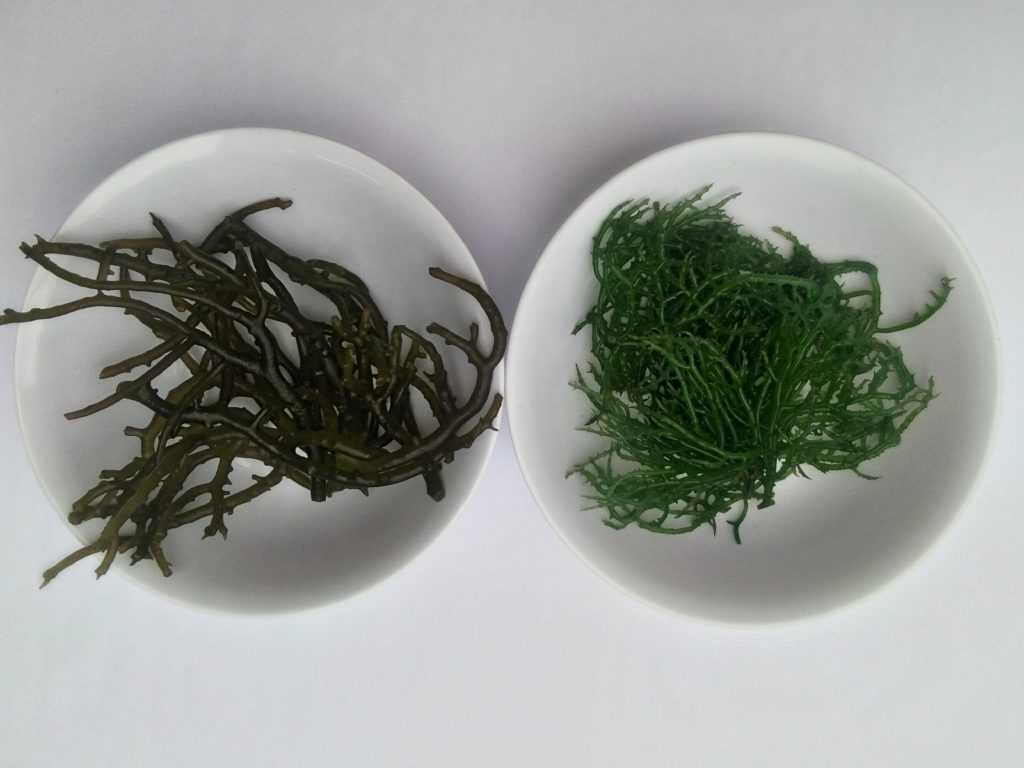
Macro Nutrients of Pacific Sea Moss
The composition of the macro nutrients of Pacific Sea Moss (Carbon, Oxygen, Nitrogen )is provided below
Total Nutrients of Pacific Sea Moss
| Biomass Properties | Element Symbol | Mean (% dry weight) |
|---|---|---|
| Carbon | C | 14.8 |
| Hydrogen | H | 2.6 |
| Oxygen | O | 20 |
| Nitrogen | N | 0.3 |
| Phosphorus | P | 0.03 |
| Sulfur | S | 3.1 |
| Chlorine | Cl | 23.4 |
| Bromine | Br | 0.12 |
| Fluorine | F | 0 |
| Iodine | I | <0.02 |
We make no medical claims. But we all understand seaweed is healthy. What you may not know is that peer-reviewed scientific papers have shown in countless studies on humans, animals and in test tubes that seaweed is healthy. BioSea Health provides seaweed as a simple way to consume food. Simply good healthy food.
FODMAP and Pacific Seamoss
What Are FODMAPs?
FODMAP stands for fermentable oligo-, di-, mono-saccharides and polyols.
These are the scientific terms used to classify groups of carbohydrates that are notorious for triggering digestive symptoms like bloating, gas and stomach pain.
FODMAPs are found in a wide range of foods in varying amounts. Some foods contain just one type, while others contain several.
The main dietary sources of the four groups of FODMAPs include:
- Oligosaccharides: Wheat, rye, legumes and various fruits and vegetables, such as garlic and onions.
- Disaccharides: Milk, yogurt and soft cheese. Lactose is the main carbohydrate
- Monosaccharides: Various fruit including figs and mangoes, and sweeteners such as honey and agave nectar. Fructose is the main carbohydrate
- Polyols: Certain fruits and vegetables including blackberries and lychee, as well as some low-calorie sweeteners like those in sugar-free gum.
What Do they Cause?
FODMAPs are a group of fermentable carbs that aggravate gut symptoms in sensitive people. They’re found in a wide range of foods.
Is Seaweed a FODMAP?
Probably not, but as seaweed is not a typical dietary component in western diets most FODMAP diets do not mention seaweed. Pacific SeaMoss has a large proportion of its carbohydrates as sulfated polysaccharides. As they are relatively indigestible they will travel through the stomach into the intestines. Many of the health benefits of seaweed are thought to be due to the interaction with the microbiome in the intestines. The saccharides in seaweed are mostly complex (i.e. oligosaccharides) but there is a low level of some simple saccharides.
For those on a FODMAP diet, we would recommend to introduce them and monitor the response. The response in trials has been variable with most having no symptoms, but a having to bloat and a few chronic stomach issues disappearing.
To be clear, there’s nothing inherently dangerous about eating FODMAPs. These compounds are perfectly healthy for most people, but some of us are more sensitive to their effects than others. For instance, research reveals a close connection between FODMAPs and IBS, as it shows that roughly 70 percent of IBS sufferers see an improvement in their symptoms when they follow a low-FODMAPs diet.
There is recent unpublished work in rats from the University of Southern Queensland that demonstrated reduction in IBS with a small amount of seaweed in their diet.
Examples of FODMAPS
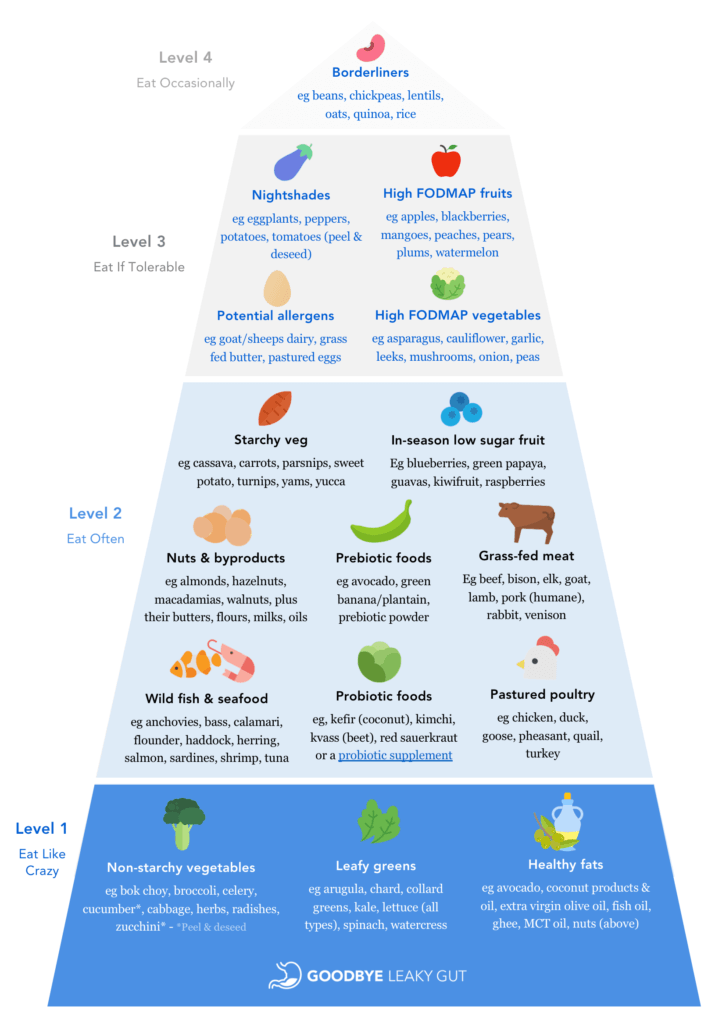
We make no medical claims. But we all understand seaweed is healthy. What you may not know is that peer-reviewed scientific papers have shown in countless studies on humans, animals and in test tubes that seaweed is healthy. BioSea Health provides seaweed as a simple way to consume food. Simply good healthy food.
References
FODMAP: https://www.ncbi.nlm.nih.gov/pmc/articles/PMC3966170/
How Much Pacific Sea Moss To Eat
Pacific Sea Moss is food. We make no claims as to the health benefits. We leave that to peer-reviewed evidence from researchers over the years; by looking at the Japanese and the contrast with the western world; and from increasing research interest in using the pacific sea moss.
Research data suggests 50 grams of fresh seaweed (5 grams of dry) has a material effect. More is better. But not too much.
There are many products in the market that claim health benefits.
We believe that eating whole food (albeit dry) provides nutritional and health benefits.
As Michael Polan says “Eat food. Mostly plants. Not too much.”
Even a decade ago, food author Michael Pollan was lecturing 2009 CDC scientists.
“The French paradox is that they have better heart health than we do (Americans) despite being a cheese-eating, wine-swilling, fois-gras-gobbling people,” Pollan said. “The American paradox is we are a people who worry unreasonably about dietary health yet have the worst diet in the world.”
In various parts of the world, Pollan noted, necessity has forced human beings to adapt to all kinds of diets.
“The Masai subsist on cattle blood and meat and milk and little else. Native Americans subsist on beans and maize. And the Inuit in Greenland subsist on whale blubber and a little bit of lichen,” he said. “The irony is, the one diet we have invented for ourselves — the Western diet — is the one that makes us sick.”
Snowballing rates of obesity, diabetes, and heart disease in the U.S. can be traced to an unhealthy diet. So how do we change?
Pollan says everything he’s learned about food and health can be summed up in seven words: “Eat food, not too much, mostly plants.”Probably the first two words are most important. “Eat food” means to eat real food — vegetables, fruits, whole grains, and, yes, fish and meat — and to avoid what Pollan calls “edible food-like substances.”
Pollan has 7 suggestions about healthy food.
- Don’t eat anything your great grandmother wouldn’t recognize as food. “When you pick up that box of portable yogurt tubes or eat something with 15 ingredients you can’t pronounce, ask yourself, “What are those things doing there?” Seaweed has been a staple for tens of thousands of years!
- Don’t eat anything with more than five ingredients, or ingredients you can’t pronounce. Seaweed. Pure. Simple. Nothing added. Nothing subtracted.
- Stay out of the middle of the supermarket; shop on the perimeter of the store. Real food tends to be on the outer edge of the store near the loading docks, where it can be replaced with fresh foods when it goes bad. We would like you to eat fresh seaweed. Dry seaweed is the next best thing.
- Don’t eat anything that won’t eventually rot. “There are exceptions — honey — but as a rule, things like Twinkies that never go bad aren’t food,” Seaweed was the supermarkets a long time ago.
- It is not just what you eat but how you eat. “Always leave the table a little hungry,” Pollan says. “Many cultures have rules that you stop eating before you are full. In Japan, they say eat until you are four-fifths full. Islamic culture has a similar rule, and in German culture they say, ‘Tie off the sack before it’s full.” Seaweed. Add to your daily diet. There is good evidence for weight loss as the seaweed makes you feel full.
- Families traditionally ate together, around a table and not a TV, at regular meal times. It’s a good tradition. Enjoy meals with the people you love. “Remember when eating between meals felt wrong?” Australian Aboriginals were eating seaweed before the Roman empire.
- Don’t buy food where you buy your gasoline. In the U.S., 20% of food is eaten in the car.
We make no medical claims. But we all understand seaweed is healthy. What you may not know is that peer-reviewed scientific papers have shown in countless studies on humans, animals and in test tubes that seaweed is healthy. BioSea Health provides seaweed as a simple way to consume food. Simply good healthy food.
Dry Seaweed Easier Than Fresh Seaweed
For many, eating fresh seaweed is just not possible. We recommend a seaweed tablet.
Shipping
Shipping of fresh seaweed from places that it is farmed to consumers is just not possible. While we can ship bananas from the Philippines to the USA or from Ecuador to New Zealand, shipping fresh seaweed is not possible and all you would get is compost. Or worse. Generally, seaweed is dried or at worst reduced to semi-dried and then re-hydrated at serving in a supplemental seaweed tablet.
Drying
We dry the seaweed where it is grown. No spoilage. Controlled. Managed.
Convenience in Seaweed Tablet Supplements
Our society is based on convenience. Do you want to learn how to prepare seaweed, and incorporate it into various recipes? Or just take a Pacific SeaMoss seaweed tablet whenever and wherever you want.
No Cooking Required
There is no food preparation required. A few tablets. Health is done.
I don’t like the taste
For some, seaweed is an acquired taste. It is called the umami. What does Umami taste like? Umami is a naturally occurring flavour enhancer, roughly meaning ‘deliciousness’ in Japanese. It is used to describe the pleasant savoury taste found in mushrooms, parmesan, and of course; Seaweed. And monosodium glutamate (MSG). Have you tried to feed mushrooms to children? Or seaweed to westerners?
We make no medical claims. But we all understand seaweed is healthy. What you may not know is that peer-reviewed scientific papers have shown in countless studies on humans, animals and in test tubes that seaweed is healthy. BioSea Health provides seaweed as a simple way to consume food. Simply good healthy food.
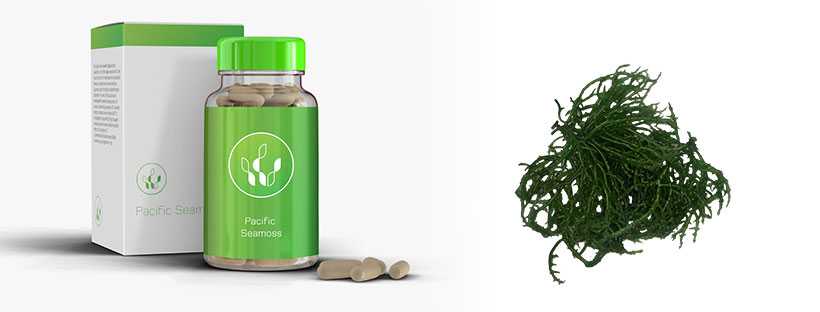
Pacific Sea Moss is Safe to Eat
Is eating seaweed safe? The first recorded is Central Americans some 14,000 years ago. Egyptians were using seaweed to reduce swellings. The Celts in Europe ate seaweed. The Japanese, Chinese and Koreans have eaten seaweed for 4,000 years. The Aboriginals in Australia have stories going back since the Dreamtime.
Is it ok to eat Pacific Sea Moss and is it safe?
What precautions do you need to take?
- Be particular about the species of seaweed you eat.
- In today’s polluted seas make sure that the levels of heavy metals (mercury, lead, cadmium) are not in the waters that the seaweed is grown in (We monitor carefully all our growing areas).
- Use modern technology to ensure the seaweed is free from bacteria and that you have full traceability and monitor the process from paddock to plate.
We recommend to use BioSea Health Seaweed supplement tablets because of all the seaweed we process is controlled, managed, tested it to make sure our seaweeds have no acquired metal elements, and we make sure it has no spoilage. We processed it according to best HACCP practice. In supplement tablets, you don’t need to cook and prepare it. The supplement tablet gives you convenience. You can bring it anywhere and whenever you want it.
Arguments that Carrageenan is not safe
There is some commentary that carrageenan is not safe. When carrageenan is processed with acid, it creates a substance called degraded carrageenan, or poligeenan, which carries significant health warnings. Poligeenan is an inflammatory substance. Researchers often use it to test new anti-inflammatory drugs in the laboratory. Poligeenan is not approved as a food additive. When we eat carrageenan it will pass through the stomach and the stomach has acid. Anecdotal evidence suggests that eliminating carrageenan from the diet can provide relief from digestive problems, such as bloating and IBD. These reports are not the result of scientific research and animal studies have demonstrated seaweed may reduce IBS.
Research Reviews stating Carrageenan is Safe
The Joint Food and Agriculture Organization/World Health Organization Expert Committee on Food Additives (JECFA) have recommended a group allowable daily intake (ADI) of “not specified”. The lack of carcinogenic, genotoxic, or tumor-promoting activity with carrageenan strongly supports continuing such an ADI, and JECFA, during its most recent review in 2001, continued this recommendation.
WebMD came to the conclusion that carrageenan in likely safe for most people when taken by mouth in food amounts.
Fresh Pacific Sea Moss is eaten by locals in Philippines, Indonesia and Malaysia. Irish Sea moss has been eaten by the Irish for centuries.
We make no medical claims. But we all understand seaweed is healthy. What you may not know is that peer-reviewed scientific papers have shown in countless studies on humans, animals and in test tubes that seaweed is healthy. BioSea Health provides seaweed as a simple way to consume food. Simply good healthy food.
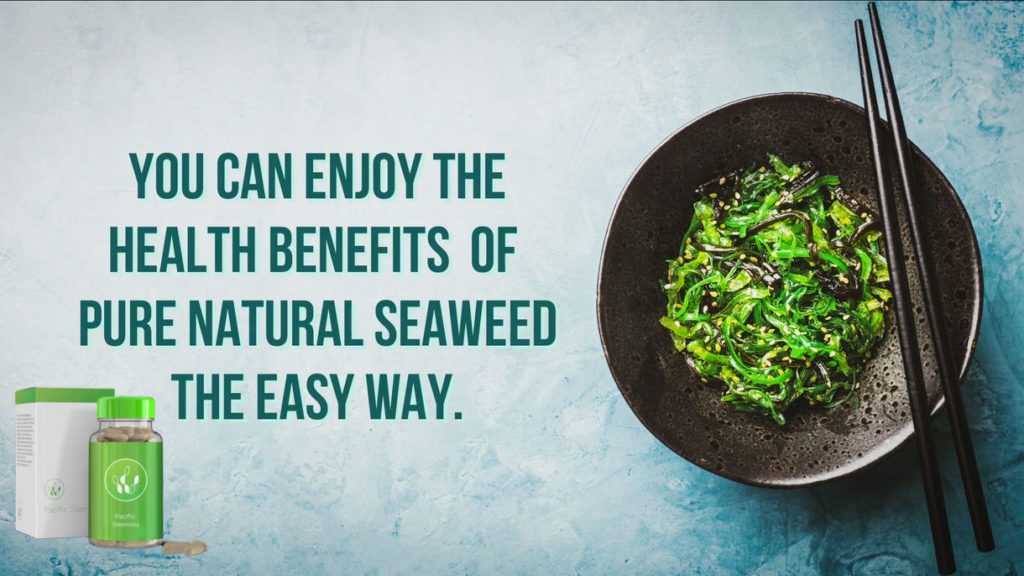
References
Monica Reginagel 2015. The Carrageenan controversy. Scientific American
Cohen, SM Ito, NA critical review of the toxicological effects of carrageenan and processed eucheuma seaweed on the gastrointestinal tract. Crit Rev Toxicol. 2002 Sep;32(5):413-44.DOI 10.1080/20024091064282 https://www.ncbi.nlm.nih.gov/pubmed/12389870
Carrageenan: Uses, Side Effects, Interactions, Dosage, and Side Effects WebMD
Side Effects from Pacific Sea Moss and Some Symptoms
Some people find they are allergic to different food products, such as nuts or seafood. Some to various fruit. And there is a growing body of evidence that humans live in a delicate balance with their microbiome. For almost all, health benefits from eating seaweed outweigh any negative effects. With any change in diet, you may have some temporary changes until your microbiome adjusts to the change in diet. We have found even people with very sensitive tummies eat seaweed without issues.
What We Now Recommend
Start slow. Eating any new food may cause minor GI (gastro-intestinal) effects, whether a new food or a big change in diet. Seaweed is high fibre so think of it as one of your daily serves of vegetables.
- Take 2 capsules per day in the first week, and then increase to 4 per day. If you have a very sensitive gut, start with 1 capsule per day.
- Our microbiome needs time to adjust, in the same way, if you started having lots of fibre. A Japanese paper proposed the bacteria in our gut are not as used to seaweed as they used to be because less seaweed is eaten.
- Make sure you eat with food. Unless you like seaweed burps!
- If your diet is 2 minute noodles, or rice and chicken, you will be not be consuming the recommended 20 to 30 grams of fibre per day! The 2.5 gram of seaweed will not be 15% of your RDA, but much higher!
- If you current eat a high fibre diet, where it is recommended 5 to 7 serves of vegetables, you will unlikely have any GI issues.
Customer Positive Outcomes
This is the feedback from current customers.
- 35% of customers experience less pain after exercise
- 30% more endurance after exercising
- 25% noticed a reduction in pain levels (osteoarthritis)
- 50% had stronger nails
- 48% improvement in bowel movements
- 20% improvement in blood pressure
- 40% more energy
- 30% improvement in sleep
- 20% increase in hair growth
- Improvement in dysmenorrhea
Negative Outcomes
About 7% of our customers have a few issues. Most who persist over the first few days find these effects are temporary as their system adjusts to a different diet.
- Minor bloating. Start with 1 capsule and work up. Give yourself time to adjust to a new food.
- A few complain their farts are smelly. The change in gut microbiome settles down within a few days.
- If you take a course of antibiotics, your stomach microbiome will change as the antibiotics kill off bacteria. Keep eating the seaweed but reduce the quantity.
- Some find the capsules hard to swallow. Try the chocolate or the sourdough bread recipe using the powder.
- If you do experience ongoing symptoms then firstly reduce the quantity down to 1 per day and then slowly increase.
- Or simply stop eating Pacific Sea moss.
Seafood Allergy
The rate of “seafood” allergy is about 2% of the population. Crustacea (such as shrimp, crab and lobster) cause most reactions, often severe, but some have an allergy to molluscs (clams, mussels, oysters and scallops).
For a more detailed response – check out the page on allergies
Seaweed is grown in the sea, naturally, and as soon as we plant it on ropes, sea creatures come and live in it. That’s a fantastic part. Little fish come in for protection, then they get their predators and even huge fish like whale sharks. When we harvest seaweed we do check and remove any animals and other seaweed species. It is washed thoroughly to remove other things that are too small to see and rinsed in clean fresh water before drying. But there could be a tiny mollusc or shrimp – too small to be spotted that has come in. Just like getting a snail or grub in a lettuce/cauliflower. It is natural, vegan, organic but it only takes one in a 1,000 capsules.
There is a warning on the bottle label. Do not risk eating seaweed if you have a known seafood allergy. The risk is very low but the consequences potentially deadly. Some are not aware of their allergies.
References
[1] Teas et al 2009 Could dietary seaweed reverse the metabolic syndrome? Asia Pac J Clin Nutr – ISBN 8035765612 see http://apjcn.nhri.org.tw/server/APJCN/18/2/145.pdf
Teas’ Trial in 2009 Indications
Teas reported from a small study with 30 people that there were only minor adverse side effects noted: soft feces, (2 subjects), increased amount of feces (1 subject), transient discomfort of the stomach after taking seaweed (3 subjects), and sense of fullness (1 person). Two subjects reported positive side effects of participating in the study: the resolution of pre-existing gastritis (1 subject), and the disappearance of chronic headaches (1 subject). Two people complained about taking too many capsules, and one of these subjects withdrew from the study.
We, therefore, expected symptoms to include:
- Bloating
- Increased stools (waste)
- Decreased stools
- Headaches
But more often this is not the case. We now only suggest 2.5g, and introduce over a week or two to minimise bloating. Most find their stools improved.
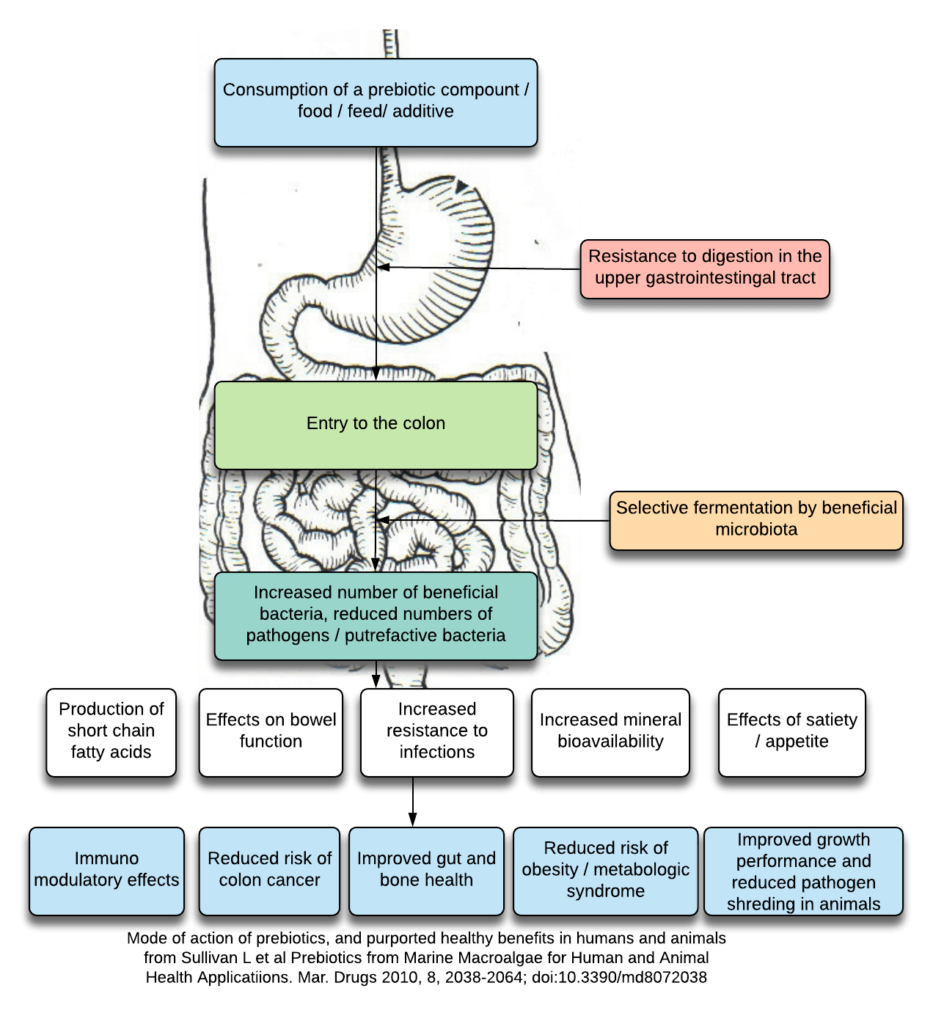
How Much Healthy Seaweed is Healthy
In the few trials that have been carried out on humans the amount of dry healthy seaweed consumed and the amount that has significant impacts on health is about 4 to 8 grams of dry seaweed per day. This equates to about 50 grams of fresh seaweed.
If you are familiar with Nori, which is the Japanese name for dried edible seaweed sheets made from a species of red algae called Porphyra, including Porphyra yezoensis and Porphyra tenera. It is probably most popularly known for its use in making Sushi, but it is used in many other applications too.
Here is two dessert plates of 50 grams Pacific Sea Moss. On the left is Kappaphycus alvarezii (cottonii) and on the left Eucheuma denticulatum. (spinosum). The amounts are similar to a lettuce type salad – this 50 gram dries down to about 5 grams of dry healthy seaweed.
We make no medical claims. But we all understand seaweed is healthy. What you may not know is that peer-reviewed scientific papers have shown in countless studies on humans, animals and in test tubes that seaweed is healthy. BioSea Health provides seaweed as a simple way to consume food. Simply good healthy food.

Iodine Levels in Pacific Sea Moss
Recommendations
Pacific Sea Moss has some iodine. Eating 5 gm of dried seaweed will provide about 20% of the recommended daily intake. It is enough to ensure that you do not develop sub-clinical iodine deficiency but not like kelp which is much higher concentration. The permissible iodine level in seaweed are often debated as iodine exists in both inorganic and organic forms and most in the health industry prefer the chemical forms in seaweed rather than the inorganic iodine form. The European Union sets a recommended daily allowance for adults of 150 µg iodine, with a maximum of 600 µg per day. To put that into context, then milk and other dairy products provide about 30 – 63 µg, and eggs 50 µg per 100gm of food.
Most seaweeds have traced to some and most are ok to consume – especially at 5g of dry per day. While Nori seaweed is up to 150 µg per 100g, Kombu kelp can contain up to 2,984 µg of iodine per seaweed sheet (1 gram). This provides almost 2,000% of the recommended daily intake. Excess iodine consumption is well-tolerated in the majority of people but could result in thyroid dysfunction for those who are susceptible. China insists on using Kombu for its people to reduce iodine deficiency, especially that inland where there is extensive iodine deficiency.
Iodine is essential
Iodine is essential for thyroid hormone production and thus involved in energy metabolism. Insufficient iodine results in hypothyroidism, a condition marked by weight gain, weakness, and an enlarged thyroid gland (called “goitre”). Iodine deficiency is a significant public health concern, particularly for pregnant women, infants, toddlers, and young children, as prolonged deficiency during development results in irreversible brain damage and mental retardation.
China has marked marginal iodine deficiency and it is illegal to sell salt without additional iodine and eating Kombu is encouraged to reduce sub-clinical iodine deficiency.
Contrast that in Australia only 10% of salt is iodized, and with less than 100ug consumed per day then widespread iodine deficiency has been demonstrated.
We make no medical claims. But we all understand seaweed is healthy. What you may not know is that peer-reviewed scientific papers have shown in countless studies on humans, animals and in test tubes that seaweed is healthy. BioSea Health provides seaweed as a simple way to consume food. Simply good healthy food.
References
Li et al 2001 Re-emergence of iodine deficiency in Australia Asia Pacific J Clin Nutr (2001) 10(3): 200–203 – see http://apjcn.nhri.org.tw/server/apjcn/10/3/200.pdf
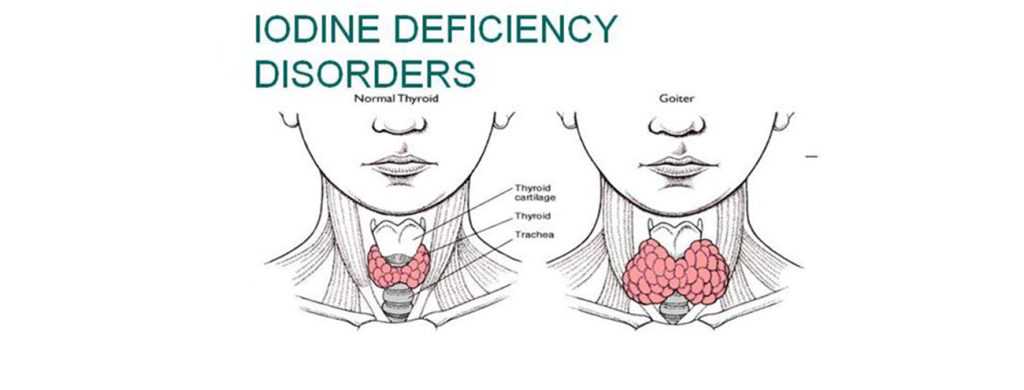
Risk of Heavy Metals in Biosea
Seaweeds are really good at sucking up chemicals in the water and therefore there is reasonable concern about the safety of seaweeds. There is now almost nowhere in the globe where the sea is not polluted from humans. The seaweed is grown in areas with low population and industrial presence. It is not harvested within a week of high intensity storms, where there is a risk of flooding and ocean pollution. We test the water and the seaweed and the levels in the seaweed pass the current permitted levels. We do not ship any product that has more than detectable levels. Why eat to be healthy but then ingest levels of toxic chemicals.
Batch tests completed include the following. None of the latest tests have shown any elevated levels. Most heavy metals exist naturally but some are the result of pollution from mining or industry.
- Lead (Pb) Permitted levels = 10 ppm. Tested level 1.1ppm
- Mercury (Hg) Permitted level limit 0.5ppm. Tested level = Not Detected
- Cadmium (Cd) Permitted level 0.3ppm. Tested Level 0.23ppm
- Arsenic (Ar) Permitted limit 0.3 ppm. Tested level = Not Detected
- Manganese (Mn) No limit but recommend RDA is 2.8 mg per day. Seaweed tested = less than 1% DV
- Biological contamination tests (E.coli, Aerobic plate count, Yeasts, Moulds, and Salmonella detection) are regularly carried out.
But in some areas and for some species they do concentrate and are used in water remediation. There is seaweed grown in the mouth of the Rhine River to extract out nitrogen, lead, cadmium to reduce the levels going into the North Sea.
Other seaweed is not harvested but washes up on the shore after storms. In contrast our seaweed is grown in the clean sea (monitored), harvested, dried and put into product.
All with the latest state of the art gate to plate tracking process and formally organically certified.
So be careful of seaweed products is grown in river mouths, or is not carefully monitored.
NB. Back in 2012,researchers found seaweed (K. alvarezii extract) exhibits potent anti-genotoxicity effects in a fish model; and thus seaweed extracts may be recommended as a supplement in fish meal and may benefit humans ingesting Hg-contaminated fish.
Interaction with Selenium and Sulfur
There is a complication to the heavy metal issues. Seaweed has a moderate amount of both selenium and sulfur (sulphur) and these are protective against heavy or toxic metals.
- Selenium is protective against cadmium, arsenic, mercury, and lead
- Sulfur (being to a lesser degree protective of the same), is helpful to lower aluminum levels.
References
See Nagarani, Nagarajan & Janakidevi, Velmurugan & Yokeshbabu, M & Kumaraguru, Arumugam. (2012). Protective effect of Kappaphycus alvarezii (Rhodophyta) extract against DNA damage induced by mercury chloride in marine fish. Toxicological & Environmental Chemistry. 94. 10.1080/02772248.2012.707792.
[2] Roth 2016. Selenium and Sulfur. Cellular Nutrition https://acu-cell.com/ses.html
Pacific Sea Moss Species
Pacific Sea Moss Species?
We use a variety of seaweeds (macroalgae) that grow in the subtropical waters. We currently only use Kappaphycus alvarezii (often commonly called cottinii and previously called E. cottonii).
There are from 30,000 to 1 million of algae, but for macro-algae, there are at least some 13,000 species. Humans only use about 13 species commercially although there are dozens (>97) species in the Philippines and there are species not yet identified. Genetic profiling of seaweeds is only just beginning.
Taxonomists and seaweed researchers typically describe 3 types and include species from the Rhodophyta (red), Phaeophyta (brown) and Chlorophyta (green) families of macroalgae. This is very confusing, except for taxonomists. E.g. The red seaweeds of Eucheumia and Kappaphycus were only separated into 2 separate genera in 1988. They exist in a range of morphologies and colours depending on where it grows! Common names exist but these sometimes refer to different species. For example, Elk sea moss is a USA name, guso, kanot-kanot and Tambalang are all common names for K. alvarezii but in some locations the species is actually not that one.
Varieties of Pacific Sea Moss?
Red seaweeds
- Kappaphycus alvarezii – called cottonii in the Philippines / Indonesia / Malaysia and grown for its kappa-carrageenan content. Prior to 1985 the taxonomic name was Eucheuma cottonii. This is the primary species used in Pacific SeaMoss and also on the “BELFRIT” list of accepted food seaweeds. The primary carrageenan produced is kappa-carrageenan sulfated polysaccharides.
- Eucheuma spinosum. The new proper species name is E. denticulatum but most literature still refers to it as E. spinosum or “spinosum”. It has a wide range of phentoypes – i.e. some cultivars look like different species, but are genetically probably the same. Called guso in Philippines and generally green in colour but can be brown, red or green in colour. The species is on the approved list in Europe. The list is the “BELFRIT” list of accepted food seaweeds. (Shortened from Belgium, France and Italy). This species produces iota-carrageenan sulfated polysaccharides.
- Chondrus crispus is a red seaweed, also called Irish moss and is a common edible red seaweed that can be found on rocky shores in the Northern Atlantic. The cell wall contains carrageenan and C. crispus is the original source of this commercially used thickener.
- Porphyra if probably the most domesticated seaweed. Known as Nori in Japan, “laver” in the United Kingdom, the United States, and Canada, “purple laver” in Britain and Ireland, “karengo” in New Zealand, “gim” or “kim” in Korea, and “zicai” in China, is primarily used as food in the Japanese delicacy “sushi,” which consists of roasted blades, fish, rice, and other ingredients. There are 60 to 70 species worldwide.
- Halymenia (some 70 species)
- Gracilaria is used as a food in Japanese, Hawaiian, and Filipino cuisine. In Japanese cuisine, it is called ogonori or ogo. In the Philippines, it is called gulaman and used to make gelatin. In Jamaica, it is known as Irish moss. There are many species
- Dulse (Dulsepalmaria palmata) is a cool water red sea moss and gained media attention as “seaweed bacon”.
- Gigartina skottsbergii, Irdae or Mazzaella laminarioides species are wild harvested for carrageenan production in Chile (from Concepcion to Chiloe Island).
- Sarconema filiforme is a red seaweed found in Queensland, Australia, with iota-carrageenan and was used in an obesity experiment.
Green seaweeds
- Caulerpa lentillifera – sometimes called sea grapes or “Umibudo” in Japan and grown throughout the Pacific.
- Aonori or green laver (Monostroma spp. and Enteromorpha spp.)
- Ulva sp or sea lettuce. Sea lettuce is eaten by a number of different sea animals, including manatees and the sea slugs known as sea hares. Many species of sea lettuce are a food source for humans in Scandinavia, Great Britain, Ireland, China, and Japan (where this food is known as aosa). Sea lettuce as a food for humans is eaten raw in salads and cooked in soups. It is high in protein, soluble dietary fiber, and a variety of vitamins and minerals, especially iron. The issue with sea lettuce is contamination with toxic heavy metals.
Brown seaweeds
- Sargassum has a number of species, and generally free-floating. Sargassum is not a prime edible but a plentiful one. It can be eaten by itself or added to fish and meat dishes. If not strong it can be added to salads after washing, or it can be cooked in water like a vegetable.
- Kombu or haidai. Laminaria is a genus of 31 species of brown algae commonly called “kelp”. Some species are also referred to as tangle. This economically important genus is characterized by long, leathery laminae and relatively large size. Names include bull kelp, giant kelp, and Kombu or haidai in Japan. It may be a range of species including L. longissima, L. japonica, L. angustata, L. coriacea and L. ochotensis.
We make no medical claims. But we all understand seaweed is healthy. What you may not know is that peer-reviewed scientific papers have shown in countless studies on humans, animals and in test tubes that seaweed is healthy. BioSea Health provides seaweed as a simple way to consume food. Simply good healthy food.
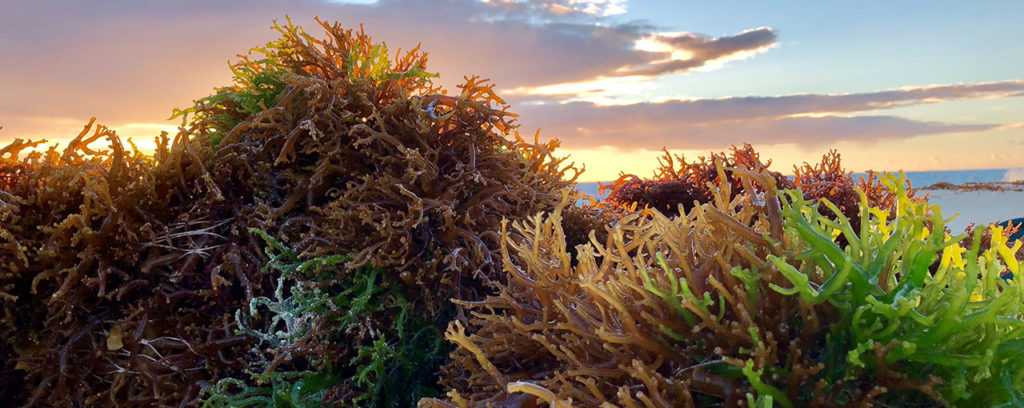
Delivery and Tracking
We ship free.

No surprises. Free. Some destinations may take longer.
We will provide you with delivery and tracking details. We understand that purchasing on the Internet can be concerning. If we don’t meet your expectations then it is free. Money back guarantee. No ifs, buts or maybes.

